05 May Shearing Day at Martha’s Farm & A Prize for All
The days have pushed themselves along since the birth of our three brave lambs born to “Robin” on March 6th. When they arrived, I did not call them anything much. I just looked at them, noted their shape and health and desire to eat, and thought, Those three, they are the ones without names!
Eleven lambs were born out here in my big barn, but those three didn’t get names because of needing some entertainment this spring, thus launching my lamb naming contest. The contest has given me many gifts from loud laughs to, Are you crazy? to Ohhhh, I like that one.
Shearing Day Arrives
Where does your year start? For me, shearing day is a big starting spot. Of course, when the lambs are born is a big moment too!
On shearing day, wool comes off the back of a sheep. They don’t know that there is a lovely sweater riding around on them. All they know is that they are hungry. Whim takes them where ever they go (within the confines of the fences). They eat, and eat, and then lie down, and rest, and chew their cud, and think lovely thoughts about eating, oh, and drinking.
Whenever I go down to count them, and take a look (because that’s what shepherds do), they pause in their chewing and say: Hey, old lady, how about a little something? To you this would sound like maaah-maaah-baah-bow-wop, but I have a trained ear, and know what they are saying.
It’s shearing day! The lambs get their first haircut.
But I digress, as I am prone to do.
Recently, all the lambs and their Mamas were sheared. The day before shearing, the sheep were fed a little to trick them into a pen, and left there for the night because our hero, the shearer, Ben Hearne was coming. After the all-over body haircut, they are let loose, now looking like smooth velvety seals, instead of noisy eating machines. The sheep don’t recognize each other at first, and many pitched battles are waged in the pasture-for a short time. After shearing, the wool is skirted, weighed, recorded, and dreamt about plenty…sweater, rug, hat, shawl?
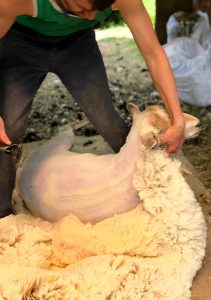
Ben Hearne shearing Skeeter
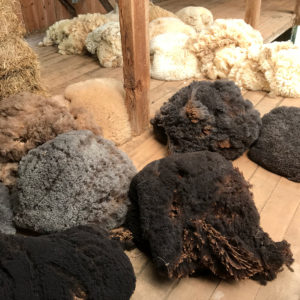
Freshly Sworn Wool
All this to say, I needed to decide the winning entry and get going on my other life as a wooly worker soon. What to do with raw fleece, yarn, batts, sweaters, mulch (but no filling of potholes in the drive way! I have tried it and the wool just bounced out when we drove over it!)
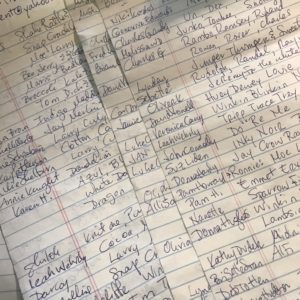
Lots of Names to Consider
The Lambs Are Named
Of the many name entries, I had many favorites, and I was beginning to seriously wonder how I was going to choose. In the end, I decided to choose the most often suggested name combination. Why of course!
Meet, Wynken, Blynken, and Nod!
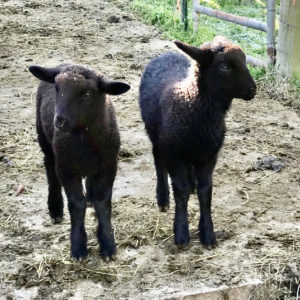
Wynkin and Blynkin, the newly named black lambs from the naming contest.
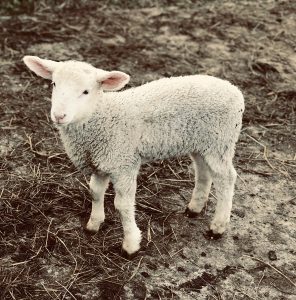
Nod, the newly named white lamb from the naming contest.
What is the Prize to Be?
Well! That took some thinking too. I have decided to extend this prize to all who played this game with me (and anyone reading along). Now that there are three lambs that have their new names: Wynkin, Blykin, and Nod, you are granted the gift of asking me anything sheep, wool, craft, or Folk School-related) that’s been on your mind. Ask me any three questions you can dream up, one per lamb! Just leave the questions in the comments below.
Let me give you examples of often asked questions:
- How long have you had goats?
- Are sheep hard to take care of?
- Will you sing me a song that has a sheep in it?
- Where can I learn to spin and how to raise sheep? ( Martha is schedule to teach Sheep to Shawl October 4-10, 2020 and February 7-13, 2021)
- Do you have a book to recommend for children about sheep and wool?
- What does Sleeping Beauty and the Industrial Revolution have to do with each other?
- Do sheep like to eat pumpkins?
Ask away my friends. It’s been lovely getting to know you better. Best Wishes until we meet again!
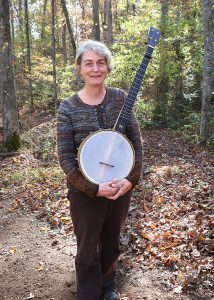
About Martha Owen
Martha is the Folk School’s Resident Artist in Spinning, Knitting & Crochet, Feltmaking, Dyeing, and Surface Design. Her adventure in spinning began at this very school in 1978. Since then, her extended family has included sheep (mostly Corriedale, Shetland, Romney) and Angora rabbits (French).
A banjo player known to tell a story or two, Martha’s interest in sheep and wool, music and dance has carried her quite literally and joyfully around the world. She reads historical fiction for knitting references and rewinds movies to see the shape of a hat or to draw a color repeat. She is a member of the Southern Highland Craft Guild and was co-owner of Yarn Circle in Murphy, North Carolina, until deciding to close in 2016. Find her on Facebook and Instagram at Martha Owen Woolens.
For wool, pattern inquiries, or any other questions, send Martha an email using the contact page on the subject pages.
Here was another big gift, looking for the words and sitting quietly and reading them. Enjoy the poem that inspired the names.
Wynken, Blynken, and Nod
by American writer and poet Eugene Field (1889)
Wynken, Blynken, and Nod one night
sailed off in a wooden shoe —
Sailed on a river of crystal light,
into a sea of dew.
“Where are you going, and what do you wish?”
the old moon asked the three.
“We have come to fish for the herring fish
that live in this beautiful sea;
Nets of silver and gold have we!”
said Wynken, Blynken, and Nod.
The old moon laughed and sang a song,
as they rocked in the wooden shoe,
And the wind that sped them all night long
ruffled the waves of dew.
The little stars were the herring fish
that lived in that beautiful sea —
“Now cast your nets wherever you wish —
never afraid are we”;
So cried the stars to the fishermen three:
Wynken, Blynken, and Nod.
All night long their nets they threw
to the stars in the twinkling foam —
Then down from the skies came the wooden shoe,
bringing the fishermen home;
‘Twas all so pretty a sail, it seemed
as if it could not be,
And some folks thought ’twas a dream they’d dreamed
of sailing that beautiful sea —
But I shall name you the fishermen three:
Wynken, Blynken, and Nod.
Wynken and Blynken are two little eyes,
and Nod is a little head,
And the wooden shoe that sailed the skies
is a wee one’s trundle-bed.
So shut your eyes while Mother sings
of wonderful sights that be,
And you shall see the beautiful things
as you rock in the misty sea,
Where the old shoe rocked the fishermen three:
Wynken, Blynken, and Nod.
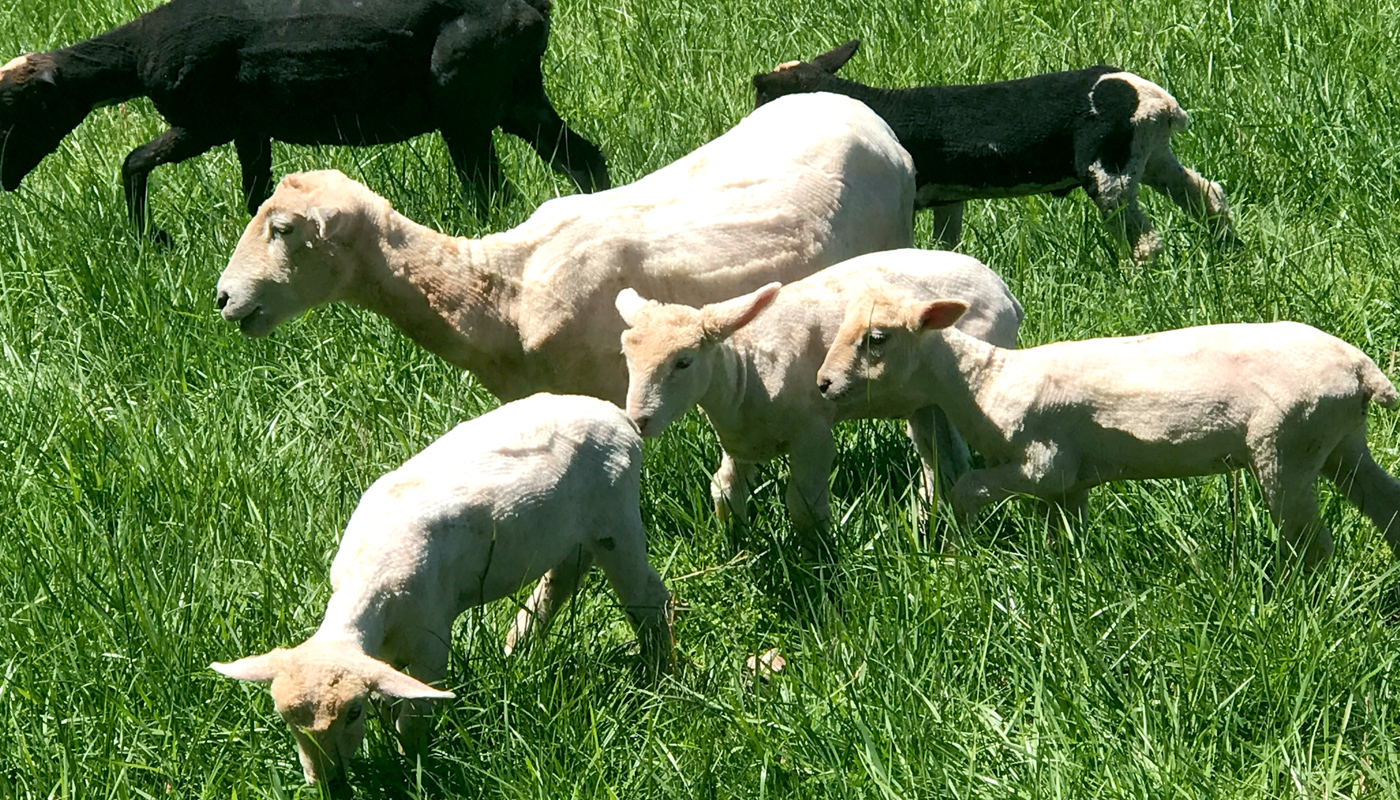











Cory Marie Podielski
Posted at 20:56h, 13 MayThank you Martha for the look into shearing day! So fun to see! Here are three questions from me:
1. How many times a year do the sheep need to be sheared?
2. Eleven lambs! Do you keep all the lambs as part of your flock, or do some of them go to new homes?
3. And you definitely perked my interest above, so I am going to re-ask: What does Sleeping Beauty and the Industrial Revolution have to do with each other?
Martha Owen
Posted at 09:58h, 14 May1. My sheep are sheared once a year although some breeds are sheared twice or every 8 months. Sheep that are shown in competitions are sheared constantly!
2. This is supposed to be my last set of lambs but, still some may go on to other homes/barns. I want to stop breeding with young sheep to carry me “over the horizon” on my sheep and wool business. Need one for your yard?
3. #3 is a big question that I have talked on for one hour at least! The easiest thing is to let me show/teach you at the FS in my next class. Oct 4-10, 2020 and Feb 7-13, 2021. The short answer is that an early hand tool was employed from the time of Sleeping Beauty, transitioned to what we call a Walking Wheel here in the southern mountains (these appeared all over the world in essentially the same form) and was positioned with many other spindles on a frame to make more thread more thread more thread for the start of the Industrial revolution. The Industrial revolution was about the production of textiles: creating factory systems, from powering the looms to underpaying the workers! Its all there! I guess Sleeping Beauty had it lucky-she was able to sleep!
Cory Marie Podielski
Posted at 11:48h, 15 MayThanks Martha! Love this insight. I don’t think a lamb will fit inside my apartment, but it is still fun to think about. I do hope to take your class one day!
Tipper Pressley
Posted at 10:55h, 14 MayMy three questions:
1. Did you grow up around sheep?
2. What’s the oddest thing sheep like to eat?
3. Do you ever have unruly or mischievous sheep?
Martha Owen
Posted at 23:41h, 14 May1. I grew up with brothers and cats. No other animals.
2. Sheep eat a few odd things like pumpkins and cucumbers, leaves and bark. It all depends how hungry they are.Sometimes they make a mistake and eat the wrong things when they are super hungry like mountain laurel. This will give them a tummy ache and maybe kill them!
3.I have an mischievous sheep right now that i think I will put in your yard or over in the big field at the Folkschool. her name is “Cutie Pie” and she is but she refuses to come near and she is on the other side of every gate before I blink twice. Then she hollers and wants to be with her friends but then she won’t come through because I am very scary and standing too close. You will like her very much!
Corie Pressley
Posted at 11:16h, 14 MayHey Martha! I loved reading this post and seeing the cute sheep pictures.
1.) What is a good book for beginners who would like to learn how to turn wool into yarn?
2.) Is cleaning the wool to prepare for spinning hard?
3.) Do sheep always have to be sheared even if the wool is not going to be used?
Martha Owen
Posted at 08:30h, 15 May1.Well of course I think you should come and take a class with me at the Folkschool BUT in the meantime, I have two favorites to recommend. THE PRACTICAL SPINNER’S GUIDE:WOOL by Kate Larson and START SPINNING by Maggie Casey. Both of these gals teach at the Folkschool.
2.Washing wool is easy. It requires very warm water and detergent, like dish washing liquid or shampoo and soaking. And then rinsing in water of like temperature and laying it out to dry.
3. Sheep are one of the longest domesticated animals known to man kind. They have been bred to grow wool For their health, even if you are not going to use the wool, they need to have an annual hair cut. Here in the mountains the sheep were let run before the time of fences, just like pigs and when you needed wool you went out and found them and brought them in. To keep the wool cleaner, the sheep were sheared more than once a year. Just saying! Yes, all sheep need to be sheared unless they are “hair sheep” which come form originally Africa and are popular for people training Border Collies or raising them for meat.
Katie Pressley
Posted at 10:28h, 15 MayMartha, I am now wearing a big smile. What a great post, and of course those lambs are almost to cute to bear!
My questions are:
1. Do you ever pick a favorite lamb, one that really tugs at your heart strings?
2. Is there anything that you can do to the environment to change their wool? Like planting certain things for them to eat, or covering them in coconut oil?! Hehe!
3. Do sheep bite when they feel angry or threatened?
Thanks Martha!
Martha Owen
Posted at 16:08h, 17 May1.I have learned a lot about sheep and “who”they are down these years. I always have many favorite lambs for lots of reasons. I am into it for wool so, I like the one with the lovely wool. I like the tam ones which means I put in a lot of time to make it happen-tameness. I love the ones that grow well with out much help and the funny colorful ones….and the wild ones.
2. I have changed the wool by feeding them more fat like flax seed or sunflower seed. I have made the wool cleaner by putting coats/covers on the for the time when they eat hay, like November to May, But the biggest way to change the wool a sheep grows is through who you choose to be the ram and what his special qualities might be. A ram with Curls like Beethoven, or soft like butter or brown and black like a dog….3. Sheep don’t generally bite (although Maybelle did get a big bite of my hair the other day when I was squatting to scratch the chest of a pet lamb. ) They nibble out of curiosity but they butt when angry. When feeling threatened they stomp and snort loudly to gather the group and then the turn tail and run!
Jenny De Armond
Posted at 10:39h, 15 May1. When I read about raising sheep, it kind of makes me dizzy – managing parasites, trimming hooves, nutritional issues, birthing, shearing, and so on. Did you know what you were getting into?
2. The fantasy of little lambs in the backyard is still very appealing! Do you have a special rapport with some of them?
3. Do the sheep form close connections with one another? How about with other animals on the farm?
Martha Owen
Posted at 15:58h, 17 May1. I got into sheep raising by accident. I was a suburban child descended from a Daddy and a Grandmother who did everything they could to get off the farm. My Dad even got uncomfortable when I wanted to plant flowers in the yard as a kid! But then I came to the Folkschool and learn how to spin SHEEP WOOL. I married about a year later and moved to a farm with a fenced pasture out in the country in West Virginia. My new and very idealistic husband said: “Look there Martha, there is a fenced pasture and a barn and you know how to spin, why don’t you get some sheep!” (Now the long suffering husband says, “Martha, you have too many sheep!”
I got a book called ” Raising Sheep the Modern Way” by Paula Simmons. ( It now goes under the title of Storey’s Guide to Raising sheep. There are alot of things to know…and some years are great and some years are not. But, I always considered that if I had what it took to make one more sheep then I was still in the business. Mostly what I can assure you is this! Start Small! and your problems will be smaller.But if basic need are met they are going to do fine. If you need more good and bad stories I can tell you…later. 2.You will always have a chance for a special rapport with a sheep if you have patience AND if you don’t think of them as stupid because they don’t reason the way you do. They are a sheep after all and very prone to peer pressure. 3. Sheep seem to know each other, mothers and lambs stand near each other as a normal way to do things. But they do not share or look out for one another past their first 8 months or so. Sheep love cats and also their guard dogs.
kathy beltz
Posted at 01:35h, 16 Maywell at first i thought to ask what your favorite breed is, but i think i know.. so..i’ll ask…. what is greener than the grass, what is smoother than the glass, what is louder than the horn? thank you for entertaining those of us who love folkschool…during covid, and whenever we meet…much love from my tiny house by the woods, kathy…
Martha Owen
Posted at 15:48h, 17 MayThis is a riddle….I wish I was good at riddles. Smaug would have had me in a flash. Hello you!